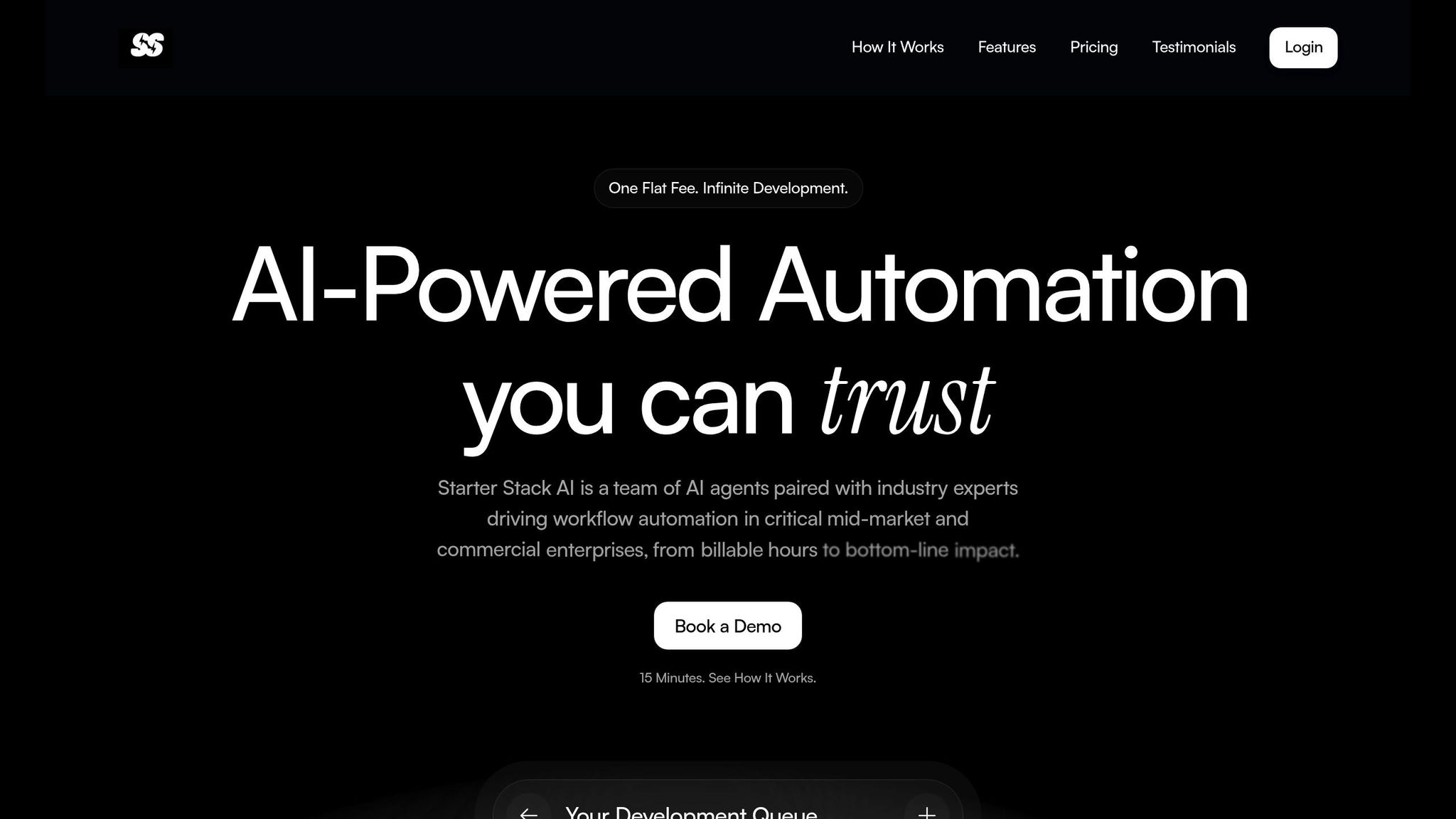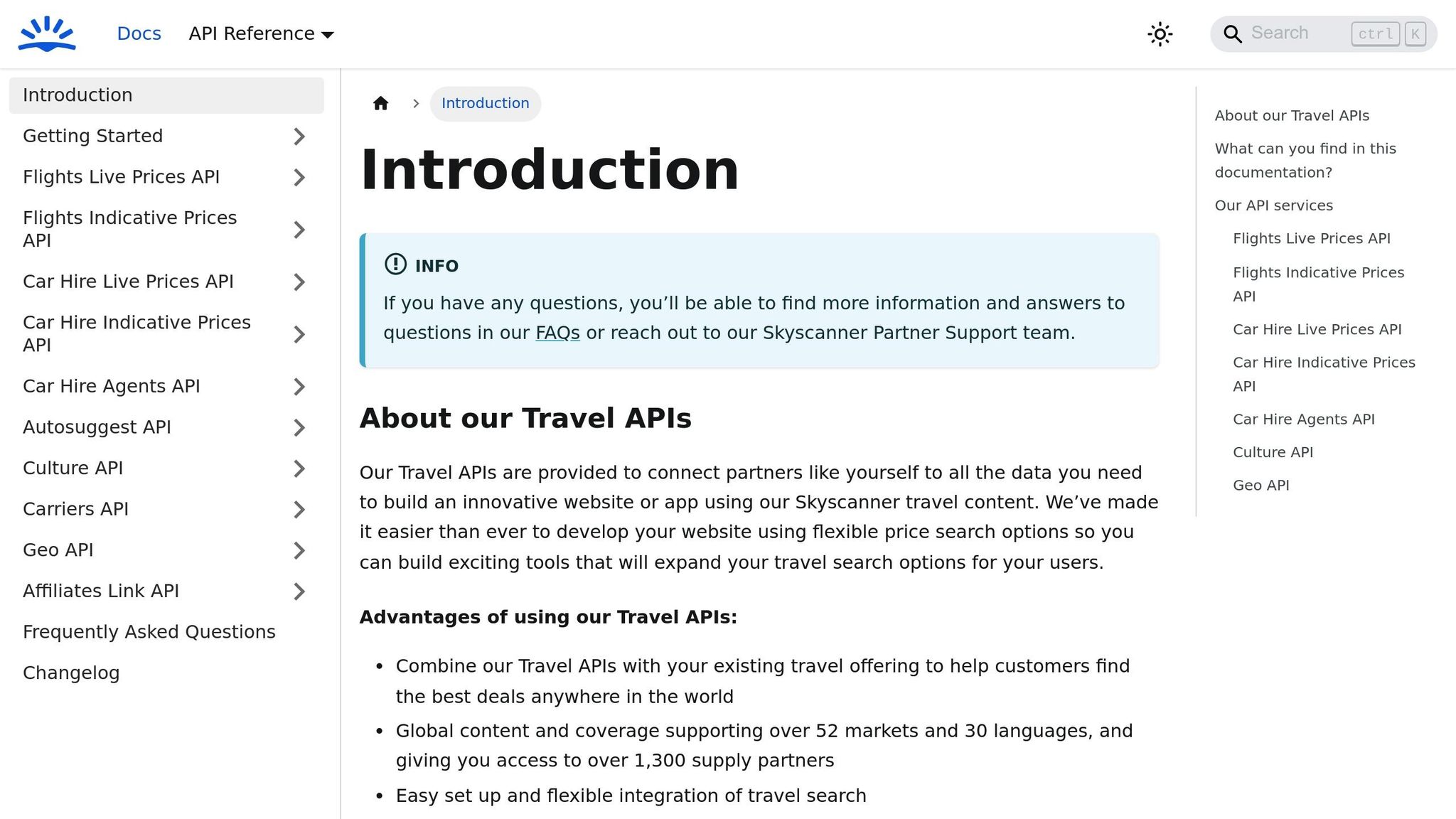How to Handle API Updates Without Breaking Integrations
API updates can break your integrations if not handled properly. Here's what you need to know to keep your systems running smoothly when APIs change:
- Understand the Risks: Breaking changes (like removing endpoints or changing authentication methods) can disrupt systems, while non-breaking changes (like adding new endpoints) are backward-compatible.
- Plan Ahead: Create a detailed timeline for updates, including assessment, documentation, testing, and phased rollouts.
- Version Control: Use clear versioning methods (e.g., URI paths like
/v1/users) to manage changes without confusion. - Maintain Old Versions: Support older API versions during transitions to avoid breaking existing integrations.
- Test Thoroughly: Automate functional, integration, performance, and security tests to ensure updates work seamlessly.
- Monitor Performance: Track uptime, response times, and error rates post-update to catch issues early.
Key takeaway: Prioritize backward compatibility, clear communication, and robust testing to avoid disruptions and ensure smooth API updates.
| Quick Comparison: API Versioning Methods | Best For | Example |
|---|---|---|
URI Path (/v1/users) | Public APIs | YouTube API |
Query Parameters (/users?version=1.0) | Internal APIs | Facebook API |
Custom Headers (X-API-Version: 1.0) | Enterprise | GitHub API |
Content Negotiation (Accept: application/vnd.api+v1+json) | Complex Microservices | PayPal API |
Next steps: Learn how to categorize changes, communicate effectively, and implement updates without breaking existing functionality.
API Versioning for Zero Downtime by Patrice Krakow
::: @iframe https://www.youtube.com/embed/RvcDs_JLc0Y :::
How to Spot and Plan API Changes
Effectively identifying and planning API changes is crucial to prevent disruptions for users and ensure smooth transitions.
Breaking vs. Non-Breaking API Changes
Breaking changes require users to update their code to maintain functionality. As Gil Feig, Co-Founder at Merge, explains, "A breaking API change is one that requires consumers of the API to change behavior and/or code from their end to continue utilizing the service" [3].
Here are some common examples of breaking changes:
| Change Type | Impact Level | Example |
|---|---|---|
| Endpoint Removal | High | Removing the /v1/users endpoint |
| Parameter Requirements | Medium | Making optional fields mandatory |
| Response Format Changes | High | Modifying the JSON structure |
| Authentication Updates | Critical | Switching from API keys to OAuth |
On the other hand, non-breaking changes are backward-compatible and typically involve adding functionality without altering existing structures. Examples include introducing new endpoints, optional parameters, or response fields.
David Roldán Martínez, Head of Integrations, highlights the importance of communication: "Transparent communication is paramount when managing breaking changes. Offering clear and comprehensive documentation on the modifications, along with a deprecation notice for outdated features, assists users in understanding the upcoming adjustments" [3].
Once you’ve categorized the changes, the next step is to create a detailed plan to manage the updates effectively.
Building an Update Timeline
Mariam Narimanidze, Product Manager at Theneo, underscores the importance of early communication: "Communication is key to managing API changes. Developers must proactively notify users of upcoming changes to give them adequate time to prepare" [1].
A well-organized timeline should include the following phases:
- Assessment Phase: Evaluate the scope and impact of the changes, and allocate a sufficient transition period.
- Documentation Updates: Revise changelogs with version details, clear descriptions of changes, impact analysis, migration guides, and deprecation schedules.
- Testing Window: Conduct automated tests, performance benchmarks, security reviews, and user acceptance testing to ensure reliability.
- Implementation Schedule: Roll out updates in phases, starting with beta testing, followed by gradual regional deployments, monitoring intervals, and predefined rollback triggers.
"Maintaining backward compatibility is an important principle to ensure that existing applications continue to function seamlessly after API changes" [1] - Mariam Narimanidze, Product Manager, Theneo
API Version Control Methods
A well-thought-out versioning strategy can help reduce disruptions when major updates are rolled out.
Comparing Version Control Options
Different versioning methods come with their own strengths and trade-offs, often catering to specific needs. Here's a quick look at some commonly used approaches:
| Method | Implementation | Best For | Real-World Example |
|---|---|---|---|
| URI Path | /v1/users | Public APIs with clear, easy-to-read paths | YouTube Data API |
| Query Parameters | /users?version=1.0 | Internal APIs with frequent changes | Facebook Graph API |
| Custom Headers | X-API-Version: 1.0 | Enterprise systems needing flexibility | GitHub API |
| Content Negotiation | Accept: application/vnd.api+v1+json | Complex microservices requiring fine control | PayPal API |
"API versioning is a system of managing API changes so that these changes don't negatively affect internal and external consumers and clients. Versioning defines a clear strategy for managing changes and reflecting them in your API structure" [2].
When deciding on the right versioning method, it's important to weigh several key factors:
-
Implementation Complexity
URI path versioning is simple to implement and works well with client-side caching. However, it can lead to longer URLs that are less adaptable. -
Cache Management
Query parameter versioning may complicate caching, often requiring additional strategies like custom headers to maintain flexibility. -
Client Impact
Content negotiation offers precise control over API responses but demands more advanced client-side implementations.
Starter Stack AI's Versioning Approach

Starter Stack AI has adopted a header-based versioning system designed to meet the needs of enterprise-level integrations. This method provides several benefits:
- Smooth, gradual rollouts that minimize disruptions
- Independent versioning for different API components
- Version-specific authentication and authorization for added security
- Automated compatibility checks to ensure consistency
sbb-itb-f5716fb
Maintaining Old Versions During Updates
Managing multiple API versions requires thoughtful planning to ensure existing integrations remain functional during updates. Striking the right balance between introducing new features and maintaining stability is crucial for maintaining user confidence and system dependability.
Phase-Out Plans for Old Endpoints
Here’s a structured, four-phase approach to deprecating old API endpoints, designed to provide a smooth transition for users:
| Phase | Timeline | Actions | Key Considerations |
|---|---|---|---|
| Planning | 3–6 months before | Identify affected endpoints and evaluate impact | Analyze usage data and critical dependencies |
| Announcement | 2–3 months before | Notify users and release updated documentation | Use clear communication channels and provide migration guides |
| Deprecation | Day of change | Enable deprecation warnings and monitor usage | Offer detailed error messages and maintain robust logging |
| Sunset | 6–12 months after | Remove old version and archive documentation | Send final notifications and outline available support options |
During the deprecation phase, implement warning mechanisms to inform users about outdated endpoints. Instead of a generic HTTP 404 Not Found error, provide detailed responses that guide developers toward the updated version [4].
Update Guides and Developer Notes
When rolling out updates, focus on documenting these three key areas:
-
Migration Instructions and Version Compatibility
Provide step-by-step migration guides, complete with code examples and compatibility matrices. This helps developers understand feature availability and changes across versions. -
Support Resources
Set up dedicated resources to assist users during the transition. These can include:- Comprehensive technical documentation
- Migration tutorials
- Testing environments for the new version
- Direct support channels for troubleshooting
Make sure your API documentation is clear and consistent. Highlight critical details such as:
- Breaking changes and their effects
- New features and enhancements
- Deprecated functionality
- Timelines for version support
- Alternative options for deprecated features
Post-Update Testing and Checks
Testing and monitoring after API updates are crucial for ensuring everything runs smoothly. In fact, regression testing alone can account for up to 80% of total testing costs [5].
Automated Update Tests
According to SmartBear, "Regression testing is a critical quality assurance practice in the software development lifecycle. It involves retesting an application to ensure that new code changes, features, or bug fixes do not introduce unintended side effects, commonly known as 'regressions'" [6].
Here’s a framework for automated tests:
| Test Category | Purpose | Key Components | Success Criteria |
|---|---|---|---|
| Functional Tests | Verify core functionality | Endpoint responses, data validation | Outputs align with specifications |
| Integration Tests | Check system interactions | API dependencies, data flow | Smooth communication across systems |
| Performance Tests | Assess speed and reliability | Response times, resource usage | Meets defined SLA thresholds |
| Security Tests | Validate access controls | Authentication, authorization | Blocks all unauthorized access attempts |
To make automated testing effective:
- Write test cases covering all critical input-output scenarios.
- Use mock external dependencies to speed up and stabilize testing.
- Keep test scripts and data under version control.
- Integrate tests into your CI/CD pipeline for automatic execution.
Once functionality is confirmed, the focus should shift to performance metrics to ensure the API remains stable over time.
Update Performance Tracking
Monitoring performance after updates is essential to maintain API dependability and catch potential issues early. Key metrics to keep an eye on include:
-
Core Performance Indicators
- Uptime: Aim for 99.9% or higher availability.
- Response time: Watch for latency trends and anomalies.
- Error rates: Track failed requests per minute.
- Resource usage: Monitor CPU and memory consumption.
-
Business Impact Metrics
- Requests per minute (RPM): Measure traffic volume.
- Time to first successful API call: Gauge how quickly users can start interacting.
- Integration success rates: Ensure smooth connections with other systems.
"API monitoring helps you verify the impact of performance improvements done in the application. It plays an important role in helping teams surface API-related issues - such as errors, latency, and security vulnerabilities - before they escalate and negatively impact dependent services, partners, and customers." [7]
For reliable performance tracking:
- Set up automated alerts in team communication tools.
- Define thresholds using historical data as a baseline.
- Monitor the infrastructure supporting your API, not just the endpoints.
- Regularly review and tweak monitoring settings based on real-world usage patterns.
Conclusion: API Update Management Steps
Managing API updates effectively requires a structured approach that prioritizes backward compatibility, clear documentation, and thorough testing to minimize disruptions and ensure smooth transitions for developers and users alike [2].
Key Principles for API Update Success
- Backward compatibility: Ensure existing integrations remain functional without requiring immediate changes.
- Clear documentation: Provide detailed and accurate guidance to help developers adapt to updates.
- Comprehensive testing: Validate changes thoroughly before deployment to catch potential issues early.
Update Success Checklist
| Phase | Key Actions | Success Criteria |
|---|---|---|
| Planning | Define version control and create an update timeline | A documented versioning strategy and published release schedule |
| Development | Check for backward compatibility and develop new endpoints | No breaking changes; all existing endpoints remain functional |
| Testing | Validate integrations and monitor performance | All test cases pass; response times meet SLA requirements |
| Communication | Update documentation and publish changelogs | Clear upgrade paths and updated API documentation |
| Monitoring | Track usage and monitor error rates | Low error rates with stable response times |
"Backward compatibility ensures that the API continues to work the same way with consumers' applications, regardless of the changes that occur." – Marwen Abid, xMatters [2]
Practical Steps for Seamless API Updates
Building on the checklist, here are three focused steps to guide your API update process:
-
Pre-Update Preparation: Develop a detailed testing plan that identifies key APIs, test cases, and potential risks [8].
-
Implementation Strategy: Introduce new features through additional endpoints while maintaining existing ones to avoid breaking changes [2].
-
Post-Update Validation: Conduct targeted testing, covering everything from basic functionality to edge cases. Monitor metrics like call volume, response times, and error rates to ensure stability [8].
Real-World Example: Skyscanner's API Success

Skyscanner’s API serves as a prime example of effective API management. By aggregating real-time data for flights, hotels, and car rentals, it demonstrates how a well-maintained API can support complex integrations while ensuring reliability [9].
FAQs
::: faq
How can I prevent my integrations from breaking during an API update?
When updating an API, avoiding disruptions is all about preparation and following smart practices. One crucial step is implementing API versioning, which allows you to manage updates without breaking existing integrations. Ensuring backward compatibility is equally important - it keeps current users' systems running smoothly.
Clear communication is another must. Share updates through release notes or notifications so users can plan ahead. It’s also helpful to support multiple API versions for a while, giving users time to adapt. Phasing out older versions with plenty of notice reduces potential headaches.
Lastly, detailed documentation and thorough testing are essential. These steps ensure the transition is smooth for everyone involved, from developers to end users. :::
::: faq
What are the best ways to test API updates and prevent disruptions?
To ensure smooth API updates and minimize disruptions, start by implementing API versioning. This approach lets older and newer API versions operate side by side, giving users time to adapt without forcing immediate changes.
Next, prioritize end-to-end testing. By simulating real-world scenarios, you can identify and address integration issues before they impact users. Equally important is maintaining backward compatibility. Avoid removing or altering endpoints in ways that could disrupt existing functionality.
Lastly, integrate automated testing tools into your CI/CD pipeline. This not only speeds up the testing process but also ensures consistent performance across updates. Together, these practices help create a reliable and seamless experience for users while reducing risks during API changes. :::
::: faq
What's the best way to manage API changes without disrupting integrations?
To keep your API running smoothly and avoid unnecessary disruptions, it's crucial to have a versioning strategy that aligns with your API’s requirements. Two popular methods are semantic versioning - which breaks updates into major, minor, or patch changes - and URI path versioning, where the API version is included directly in the endpoint (e.g., /v1/). These approaches make it easier for users to understand the nature of updates and plan for any necessary adjustments.
Equally important is maintaining thorough and accessible documentation for each version. This should include detailed changelogs that outline updates and clearly mark deprecation timelines. Proactively communicating these updates to your users ensures they have enough time and guidance to adapt to changes. A thoughtful versioning and communication strategy not only minimizes disruptions but also strengthens trust with your API users. :::
